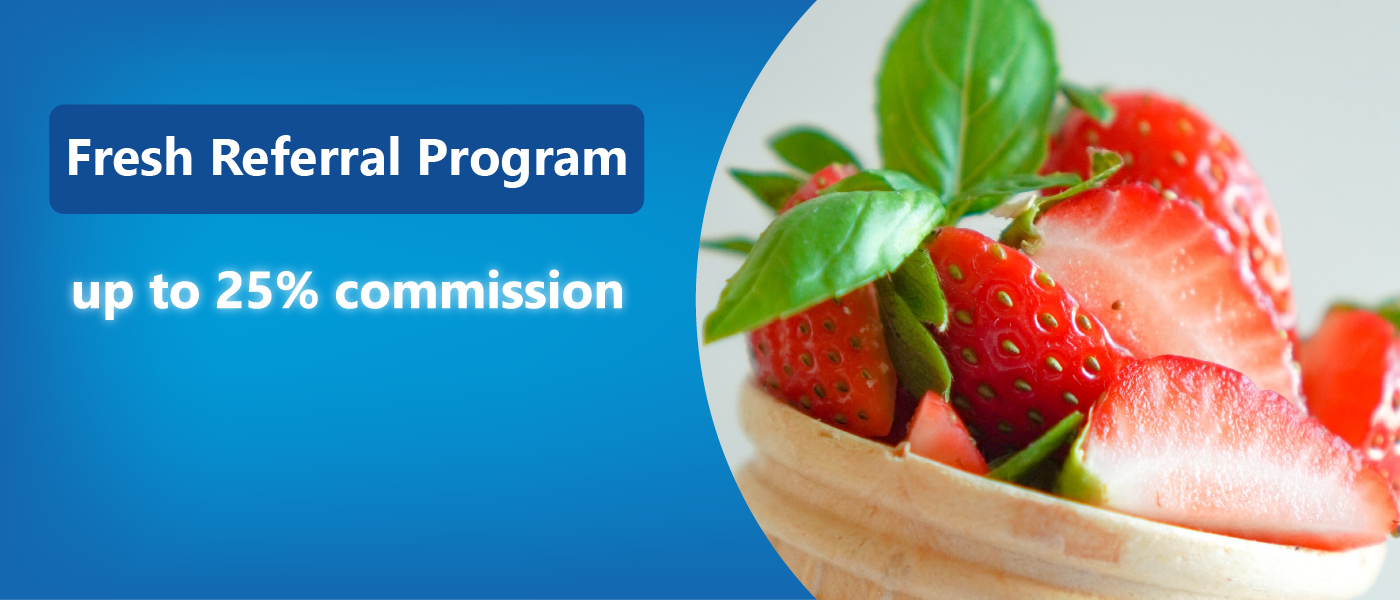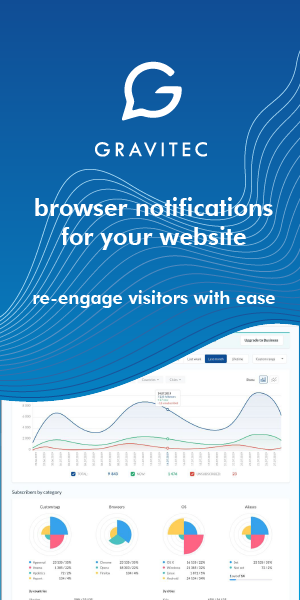To keep your website growing, you need a constant stream of returning visitors. Especially in eCommerce, returning visitors are the ones bringing in the most profit: they 65% more often add items to cart and spend 16% more than new customers. There’s more to it, if people want to return to your website, it means they like it, so it can be a valuable metric to evaluate your efforts. If you just run a blog, it’s still important to work on getting people to come back, as returning visitors are more eager to read, comment, and share your content.
We’ll go over the benefits of a high returning visitor count for your business and share ten strategies you can incorporate to gain more repeat visitors.
Why should you care about your returning visitors rate?
The returning visitor metric, or rate of return visitors, shows the health of your marketing strategy. If your visitors come to the website but don’t find what they were looking for, they’ll bounce. A high bounce rate can be a sign of a poor content marketing or marketing communications strategy. Once customers return, you’ll know that they like your content and that your message is clear across your channels, so there are no promises unfulfilled.
High return visitor rate isn’t only about customer satisfaction. It’s also about your business goals. According to a Harvard Business Review research, retaining customers resulted in 15x times ROI growth compared to acquiring new customers, where standard campaigns brought 4-6x times growth. While the numbers can be specific to a certain niche or business, visitors tend to bring more revenue and have the potential to bring more visitors to your website.
In other words, returning visitors spend more money, require smaller promotion budgets, and recommend you to their friends. So, how does one get visitors to return?
Tips on how to get returning visitors to your website
When it comes to keeping your visitors coming back, you’ll need a strategy in place. Before you add more steps, start with analyzing your website performance to see what content gets the most returning visitors. See if there are common topics or content formats that best-performing pages share. Once you know what works for your business, there are actionable steps you can take to improve your rate of returning visitors.
Improve your website user experience
To get returning visitors, you need to start reeling them in from the very beginning and make their first visit memorable and efficient. Create a clear website that has all the necessary information structured in a sleek, clean design. Include interactive content to keep visitors engaged with videos, gamification, and interactive tools.
Your website needs to be clearly structured, have all the information a user might require. It’s also essential to make sure your website is fast, looks great on mobile devices, as over a half of traffic comes from mobile devices. You can also create landing pages for specific products or campaigns using a page builder. These will work to focus your effort and gain insights into user behavior.
Here are some tips for creating a better user experience:
- add a live chat to build personal connections with your website visitors
- improve your load time, as it can be a reason for high bounce rate and cart abandonment
- a typical user has enough time to read only 28% of your page, so make sure you have all your CTAs and key information visible and scannable
Engage your visitors through email
An email list is still among the popular ways of brand communications. You need to capture the emails first and then use your email list to send your users personal offers or remind them about the content they were researching on your website. Place a subscription form where it’s noticeable, for instance, in the right upper part of the sidebar with a CTA saying something like “Subscribe, to read more content like this!” or create a pop-up that comes up on your website.
There are multiple ways to leverage email newsletter:
- send a broadcast email every time you publish new content
- follow an abandoned cart with an email with a discount or free shipping
- once a user downloads your guide, it should trigger drip emails with tips that ideally persuade them to subscribe to your service or buy your product
- offer a gift in return for a subscription, a guide, or an ebook
- combine emails with push notifications to reach more users
Reconnect with your users with push notifications
Push notifications are messages displayed to your subscribers on desktop or mobile devices, even when they’re not on your website. Push notifications require opt-in, so you’ll get an audience that’s interested in your content or products. You can create minimalistic push notifications or rich notifications with images or videos. To create and send push notifications, you’ll need a push provider like Gravitec.net.
To provide the best experience with your push notifications:
- send a push notification with a reordering link when the product a customer had bought previously is about to run out
- use compelling visuals
- work on your CTAs and copy that should be compelling enough to get users to click on your link
- personalize notifications
- create drip sequences to lead users through the most important content or basics of using your service
Create engaging content
Consider this, according to stats from Content Marketing Institute, content marketing makes three times more leads than traditional marketing campaigns. Content is what can influence the time people spend on your website. The amount of time customers spend on your website is another metric that can influence your returning visitors. If they spend a lot of time on your website, your audience is likely to find your content useful, which increases the chance of them coming back. Engaging and valuable content is a must to increase the visit time for your audience.
Once you create content, share it using push notifications, email newsletter, or social media to notify users about your new content piece.
For example, you can create interactive content that requires the reader’s participation. There are multiple types of interactive content:
- spin the wheel pop-ups
- calculators
- quizzes
- ebooks
- clickable infographics
Update content regularly
Visitors return to get more of what they liked the first time — quality content. Therefore, you need to keep your blog updated with fresh content. Fresh content is why people come back; Hubspot says that companies that publish 16 posts a month get three times more traffic than companies that create between zero and four monthly posts.
Of course, multiple factors influence the benchmarks, and there’s no magic number. However, if you have a posting schedule, it enforces consistency and fosters trust. You can also create a running series of content to attract visitors to your website. Consider what might work for your audience — a column, news coverage, or expert advice to establish your expertise.
Here are some ways to offer new content:
- use your content calendar to update old content. Start with a content audit to discover gaps in your content, schedule content maintenance, and assign necessary resources, such as SEO specialists, writers, etc.
- update content with new statistics, laws, the best SEO practices, or update images
- repurpose content so that you can have new content with minimal effort. For instance, you can turn a blog post into micro-content for your social media or put together a digest of your pieces on a similar topic.
- create videos. Not only will they keep younger users engaged, but they can also be a way to transform content you already have. Even if you don’t have a production budget, there are ways to leverage video without creating a complicated reel. For example, you can have a live Q&A session you share on your website.
Introduce a loyalty program
Nielsen research says that over 80% of visitors prefer businesses that offer customer loyalty programs, so a loyalty program might be a tipping point between a single purchase from a new visitor and an annual membership. With exclusive deals and offers, the customers will have more reasons to keep coming back. Including a rewards program can also help introduce gamification to your promotion strategy.
Take a look at Camera-ready cosmetic brand. They introduce a loyalty program that creates multiple tiers featuring different benefits as well as points that can be spent on buying cosmetics. Points can be earned based on purchases or by writing reviews or referring friends.
Different tiers can motivate customers to make purchases to protect their status or reach a new one, with better discounts and more perks. The rewards will encourage customers to stay with you in the future.
Once your customers are on board, reengage them with personalized loyalty program emails, send push notifications or use retargeting ads to remind them of the points they can use.
Retarget your ads
Retargeting works for users who have already visited your website or are a part of your database. Typically, such users are created using cookie data. There are multiple methods of remarketing offered by Google or Facebook. They both offer a wide reach for your ads — while Google reaches 92% of Internet users, the Facebook pixel can also be used to show retargeting ads to your visitors on Instagram.
Generally speaking, once a user lands on your website, a cookie is added to their browser that allows them to serve their ads with your information even outside your website. Retargeter has a perfect visual showing how retargeting works: 
Retargeting ads send your visitors a reminder to come back. You can combine them with an influencer marketing campaign. This way, when a customer sees your ad, they’ll trust it more and will return to your website. It’s also a way to deal with abandoned carts.
Retargeting can be quite effective when done right. Ted Baker fashion brand used retargeting ads to recover from the COVID-19 crisis and increase sales. It used the same imagery from its social campaigns and mixed rich creatives with carefully chosen audiences and remarketing campaigns. In about six months, they achieved a 70% increase in revenue.
Here are some tips for effective retargeting:
- test your post-click landing page to see what content interacts most with returning visitors. Hint, they shouldn’t see the info they already know
- a/b test your ads. These visitors already know you, so you might want to be extra enticing. Experiment with your offers, visuals, and CTAs
Customize your content for new and repeat visitors
New and returning customers have different informational needs. There’s no point in showing information for newcomers to your regular customers, and vice versa, your new customers won’t appreciate content about the intricacies of your product before they know what problem you solve.
There are multiple ways to personalize content based on the interaction with your website:
- personalize CTAs for returning visitors
- promote your premium content to customers who downloaded your free guide
- add welcome points or deals for newcomers and exclusive content for regular customers
- remove sign-in pop-ups for your subscribers; you don’t want to annoy them by asking for email you already have
- customize your campaigns for returning visitors. It can be as simple as changing ‘Shop now’ to ‘Discover your new favorites’
- promote your blog posts to visitors who haven’t discovered your blog yet
Create incentives for returning visitors
Incentives like coupons and cashback can have a powerful impact on sales conversion and spent amount. At Wildfire Systems, they saw over 15% of customers finishing the transaction having activated the cashback reward. Considering that the average global sales rate is slightly over 2%, that’s pretty impressive.
In addition to giving your regular customers coupons, you can take it one step further and provide personalized service. For example, if a customer previously bought from you, and you’re launching a complementary new product, you can email them a discount based on their previous purchases. Or provide access to in-depth reviews available only for regular customers. All your perks should lead towards creating a great experience because even a single bad experience from a beloved brand can lead 1 in 3 people to take their business elsewhere.
Common incentives often include bonuses like free shipping, promotional gifts or limited-time offers. You can also introduce your own affiliate marketing program to combine keeping your customers happy and promoting your business.
Nurture your following to build a community
To start building a community around your brand, you need to increase your brand awareness among your existing and potential customers and reach out to them regularly. The loyal visitors will act as an extra marketing layer, as they can provide their feedback, share your content, or talk about you with their followers.
Before online communities came into existence, basic principles that create the sense of community were established:
- Membership: people in a community have similar goals and interests, one feels they belong.
- Influence: members can influence what a group does, and the group has some influence over the members.
- Needs fulfillment: members get value from being in a group.
- Shared connection: group offers quality interactions and fosters a shared bond.
These qualities work for online communities as well, because if you don’t provide value for community members, there’s no point in being a part of the community. Consider how you can create value for your brand community. For example, you can welcome customer feedback and make them feel heard or provide access to a beta-version and show that their reaction can influence product design.
Here are some tips to make the most out of an online community:
- educate your users by creating a video course that complements your product
- create community guidelines for a clear moderation strategy to keep out trolls and abuse
- ask questions to increase user engagement
- when choosing a platform, make sure it’s discoverable and matches your audience preferences
- create exclusive content for your community
Wrapping up
Having a user retention strategy is crucial for your small business’s success. Returning users spend more on average and bring more profit than new clients. To make sure your customers return, you can take various steps:
- Improve your website user experience.
- Send them emails.
- Reconnect with your visitors with push notifications.
- Create engaging content.
- Update content regularly.
- Introduce a loyalty program.
- Retarget your ads.
- Customize content.
- Add incentives.
- Build a community around your brand.








